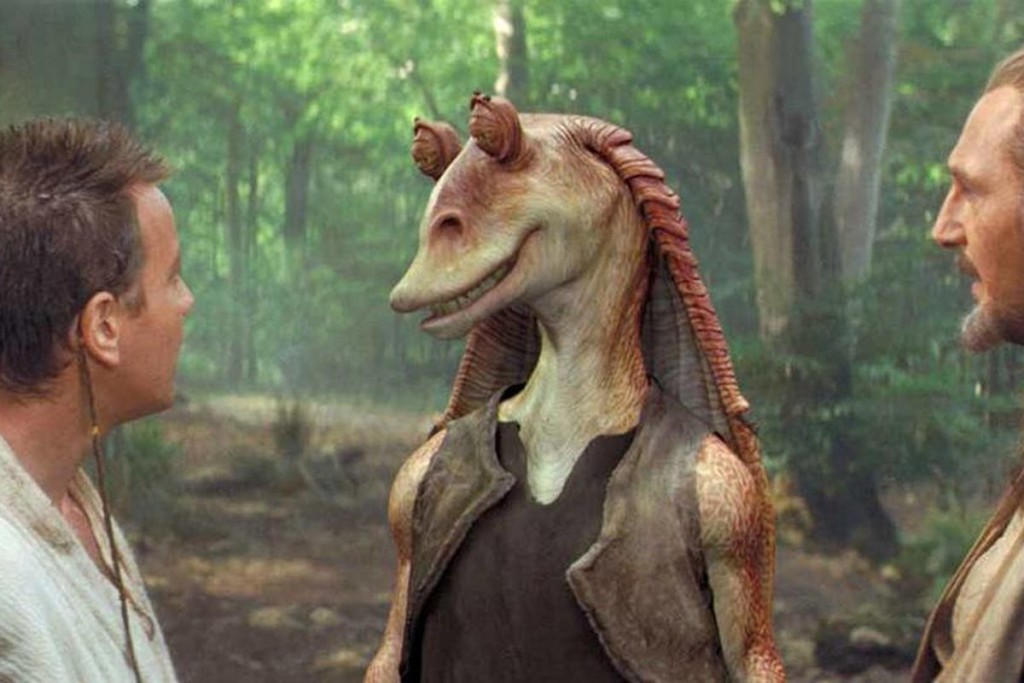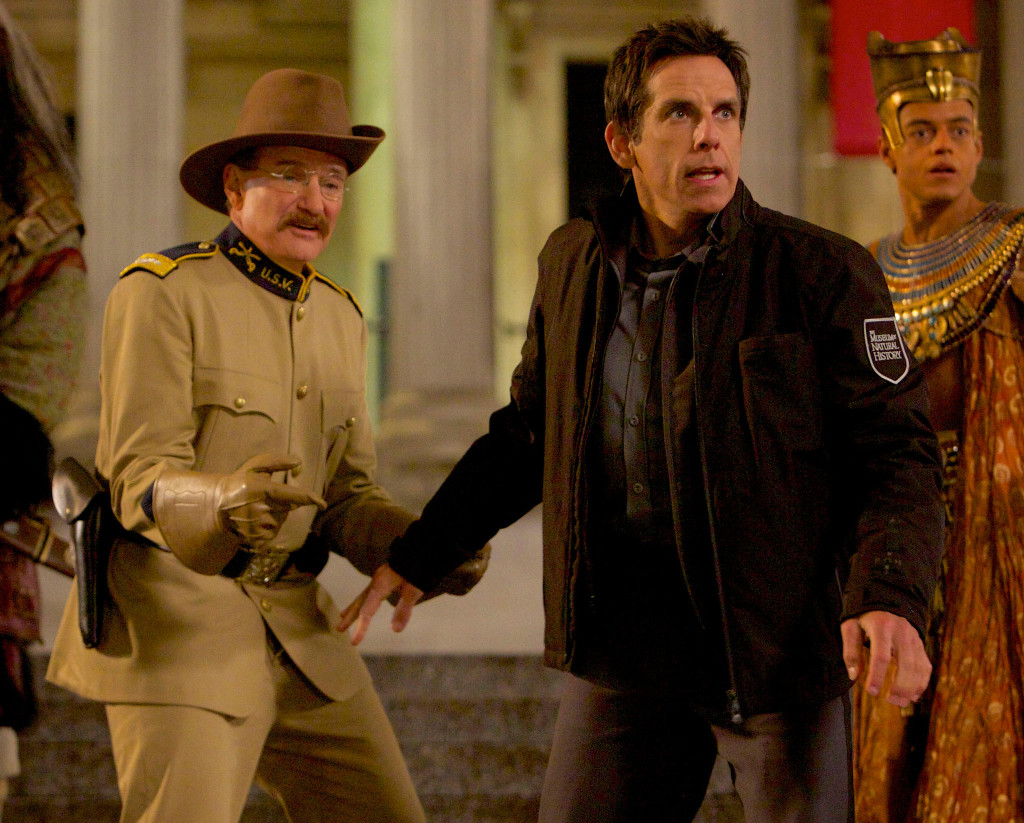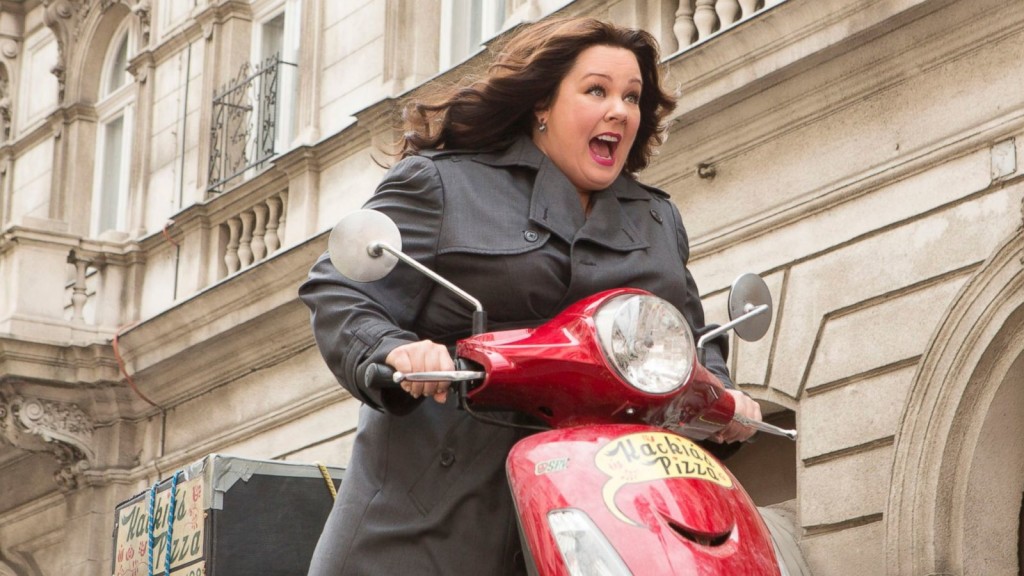Today, I want to bring you back to one of the defining characters in cinema history. He was introduced to the world on May 19, 1999.
His name?
Jar-Jar Binks.
Jar-Jar Binks was the brainchild of George Lucas. And while you wouldn’t know it today, he was supposed to be the most important character in the prequel trilogy. He would start out as the comedic relief in Phantom Menace before becoming a wise master in Revenge of the Sith.
That never happened because the world revolted against him. But I’m not concerned about Jar-Jar’s fate in today’s post. I’m focused on how Lucas made a critical comedy mistake when constructing this character. A mistake that ensured he would not be the comedic relief he was meant to be. Want to know what this mistake was?
GEORGE LUCAS ACTIVELY TRIED TO MAKE JAR-JAR FUNNY.
Now we’re going to get into a trippy thought-provoking topic today so stay with me because it’s admittedly confusing but here’s the premise of the post: The act of trying to make something funny is what makes it unfunny.
You’ve probably met that person at the party who’s desperately trying to make everybody laugh. And, yet, the more he tries, the less funny he becomes. Why is that?
Well, when somebody is actively seeking validation from you through laughter, it creates a “try-hard” vibe that dilutes the humor. It becomes more about them getting you to laugh than you actually laughing.
That’s the vibe Jar-Jar Binks gives out whenever he’s in a scene. He is not interested in talking to Ani. He’s not interested in figuring out how to outwit Watto. He’s not concerned about how they’re going to get off this desert planet. Jar-Jar Binks is only there to stand in front of all of the other characters, look directly into the camera, and make you, the audience laugh.
He is the ultimate embodiment of a try-hard comedic character.
For comparison’s sake, let’s take a look at an earlier comedic character of Lucas’s, Yoda. Yoda is hilarious. He gets in a fight with R2-D2, whacking his cane against him. He makes a bunch of jokes that only he thinks are funny and he doesn’t care if you agree or not. He has this weird way of talking backwards. He orders this giant human around. He steals food.
Yoda doesn’t care if the audience laughs or not. He is existing inside the reality of the movie, which is why what he does is so funny.
This leads me to the three cornerstones of writing a good comedy script. They are the concept, the characters, and the scenes. However, it is how you approach these three cornerstones that decides whether your movie will be funny or not.
You are not trying to come up with a funny movie idea. You are trying to come up with a movie idea that will provide the opportunity for comedy. You are not trying to come up with funny characters. You are trying to come up with characters whose personas lead to organically funny actions. You should never try to write a “funny scene.” You should construct scenes that best open up the opportunities for funny moments.
Let’s go through these one at a time.
When coming up with a concept, you’re looking for a giant situation that creates the most opportunity for comedy. Wedding Crashers. That’s a concept that, in the title alone, you can start to see the opportunity for a bunch of funny scenes. And they come to you organically. You don’t have to force anything to find them.
Same thing with Night at the Museum. You get stuck in a museum overnight where everything inside the idea comes to life. So many funny scenes are going to come from that premise without you even having to try.
Conversely, look at the Adam Sandler comedy, Hubie Halloween. That movie is about a weirdo who stumbles around his town on Halloween night. It is the definition of “try-hard.” There’s no clear concept where you can imagine funny scenarios. It is solely about a character TRYING TO BE FUNNY on an unusual night of the year. Even before the movie has started, we get the sense that characters will be desperately attempting to make us laugh, just like the unfunny guy at the party.
This extends into character-creation as well.
You don’t want to be in the headspace of, “I need to make this character really funny.” That thought-process is what creates the problem. You’re going to bypass the movie and directly focus on making the audience laugh. Which is when they never laugh. It’s the Jar-Jar Binks effect.
Instead, create characters who provide the potential for being funny within the situations they’re in. Annie (Kristin Wiig) in Bridesmaids is this really jealous person. That’s the core of her character. It’s not, “Wacky Girl.” It’s “Jealous Girl.” Then, all the movie has to do is put Annie in a bunch of situations that expose her jealously.
Like a pretty teenager coming to buy a necklace at the jewelry store Annie works at. She’s excited about hanging out with her best friend later. Annie, meanwhile, has lost her best friend to this other chick who’s fast replacing her. So Annie starts making nasty quips to the teenager about how friendships never last, which devolves into insult-hurling, until Annie finally calls the customer the c-word.
It’s a really funny scene. But I never got the sense that the character was trying to make me laugh. All of her humor came via the insecurity she harbored due to her jealousy.
Finally, you want to extend this to your scene-writing. You should never try to write a “funny scene.” You should, instead, come up with a scene that provides you with the most potential for funny moments.
If you’re writing a golf comedy, for example, you want to look for unique scenarios that mine the best opportunities for laughs. So you put the angriest golfer in the world in a mini-golf course. Or you put him in a celebrity pair-up tournament. Without me even having to explain these scenes, you’re already thinking up funny moments.
All of this seems obvious after-the-fact. But I’m the one who has to read all the amateur comedies where the writers don’t think of this stuff. They don’t think of forcing Happy Gilmore to learn how to putt on a mini-golf course. They focus on the golf tournaments and love story only and their comedy ends up being bland.
When you do all this right, it comes together in a beautiful way and leads to lots of funny scenarios. For example, the movie, “Spy.” That movie is about an introverted CIA desk agent who must become a field agent for the first time. That idea creates a bunch of funny scenarios. The main character is going to be funny just through the sheer act of trying to learn the practice of spying on the job. And there are going to be plenty of scenarios that offer potentially funny outcomes. Just having to sit down with an international kingpin during lunch and convince her that you’re a regular person — that offers plenty of opportunities for jokes.
Finally, I’m the first to admit that the rules of comedy are complicated. We often laugh at things we’re not supposed to laugh at. Or didn’t think we’d laugh at. There are times, such as in “Ace Ventura, Pet Detective,” where the main character is clearly interested in making the audience laugh, and it still works. So I’m not saying that this is only way to write comedy.
What I am saying is this formula gives you the best chance of writing a good comedy script. Even if you can only get two out of the three in there, you still have a good chance of writing a good comedy. In the meantime, if you catch yourself writing lines, characters, or scenes in a desperate attempt to make people laugh, I can guarantee you that’s when your comedy isn’t going to work. And if you ever need a reminder of why, pop in every scene of Jar-Jar Binks in The Phantom Menace. He’ll remind you. :)




